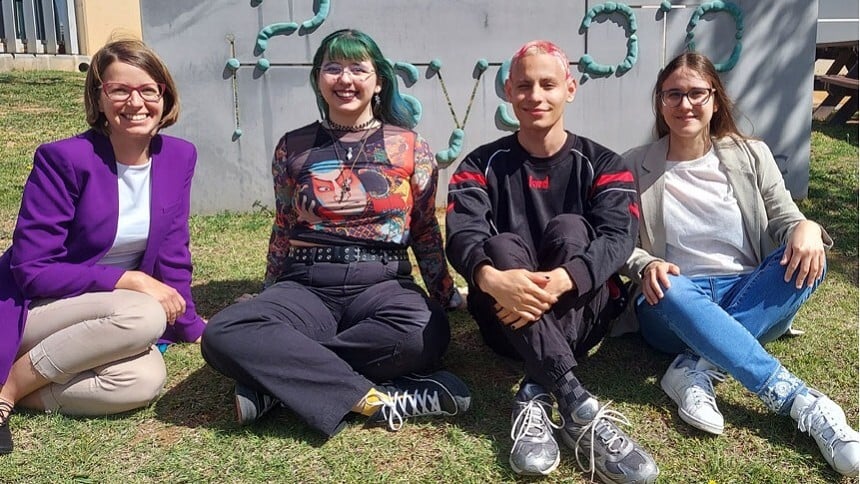Mária Džunková’s research group from the Institute of Integrative Systems Biology (I2SysBio), located in the Science Park of the University of Valencia, has developed methods for extracting DNA from animals collected in the field under non-ideal conditions. In particular, they obtained quality DNA from a nudibranched species-shell-free marine molluscs with soft bodies and bright colours-in six of the 24 combinations performed. The paper has been published in Ecology and Evolution
This research is part of the Catalan Initiative for a n Earth Biogenome Project (CBP), a regional branch of the Earth BioGenome Project (EBP), which aims to sequence and catalogue the genomes of all known eukaryotic species. Specifically, the CBP aims to sequence the genomes of more than 40,000 species that inhabit Catalan-speaking territories.
In the published study, 24 combinations of conservation and DNA extraction were evaluated in one nudibranched species of Peltodoris atromaculata. Because nudibranchs are often collected in remote locations, conservation methods need to be applied which may affect the quality of the DNA, thus making it difficult to obtain the material required by long-read sequencing techniques, those that allow very precise and continuous reading assemblies to be generated, which are essential for the study of genomic architecture and the resolution of complex regions of the genome.
"The results indicate that the success of high molecular weight DNA extractions is influenced by conservation methods. The study provides key results by identifying effective combinations of DNA conservation and extraction, which will generate high-quality reference genomes and contribute to the knowledge and sustainable use of marine biodiversity", Mária Džunková, I2SysBio researcher
"The results indicate that the success of high molecular weight DNA extractions is influenced by conservation methods," explains Mária Džunková, who notes that the study provides key findings in identifying effective combinations of DNA conservation and extraction, "which will enable the generation of high quality reference genomes and contribute to the knowledge and sustainable use of marine biodiversity".
Although only 1% of the 2,545 known nudibranch species have now been sequenced, there is growing interest in this group for its outstanding biological diversity and complex chemical defense mechanisms; with potential in biotechnology and pharmacology.
In this research have also participated Inés Alberola-Mora, Oleanna Guerra-Font and Omar Daniel Espinoza-Calderón, research staff of the Institute of Integrative Systems Biology (I2SysBio), located in the scientific areaacademic of the Science Park of the University of Valencia (PCUV), as well as joint centre of the Superior Council for Scientific Research (CSIC) and the University of Valencia (UV). Carles Galià-Camps from the University of Barcelona, the Biodiversity Research Institute (IRBo) and the Blanes Centre for Advanced Studies (CSIC) have also participated. Research has been supported by the Institut d'Estudis Catalans, the Generalitat Valenciana and the Ministry of Science, Innovation and Universities.
Fuente: UV Noticias
Don’t miss the interview with Maria Dzunkova, researcher of I2SysBio, in our section of Europark
Inés Alberola-Mora, Oleanna Guerra-Font, Omar Daniel Espinoza-Calderón, Carles Galià-Camps, Mária Džunková: «Combination of Sample Preservation Approaches and DNA Extraction Methods for Long-Read Sequencing of Nudibranchs’ Genomes». Ecology and Evolution, 2025; 15:e71262. DOI: https://doi.org/10.1002/ece3.71262
--
Recent Posts


